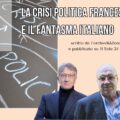China’s interest rate cut on June 7, the first since 2008, is just the beginning of a long process of bringing down the cost of money. The Chinese economy is in much bigger trouble than official figures show. The slowdown is being felt in China already, the credit crunch of the last couple years has been hard, and the Chinese certainly did not expect the Euro crisis. These combined factors have forced the Chinese authorities to backpedal to prevent the economy from stalling. The real benchmarks of growth are energy consumption, container movements, and coal use, all of which are actually lower than official estimates.
At this point, China needs to reduce the cost of money to stimulate bank lending, which has been dropping in the last two months. The Chinese government essentially uses banks as a treasury, and through instructions given to banks on how to loan, they de facto control the monetary base. The real accountants of the Chinese state are their banks.
However, despite government orders to lend more, banks have actually been lending less over the last two months, and the only option left is to lower the cost of money to stimulate investment. The rise in consumption has not been able to offset the fall in investments; consumption has accounted for 77% of growth over the last two months, but only 35% of GDP overall.
So in the short term, there is no other way for China to breathe life into its economy other than jumpstarting industrial, infrastructure, and construction investments, and the only way to do this is by lowering the cost of money.

















Lascia un commento